 Facebook
Facebook
 X
X
 Instagram
Instagram
 TikTok
TikTok
 Youtube
Youtube
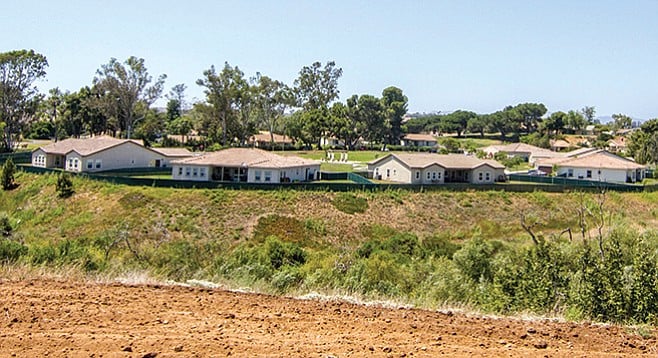
We were nearing the end of a late-afternoon soccer practice, trying to squeeze in a few more minutes of scrimmage time before the sun set when coach blew his whistle. The long, shrill tweet stopped the action and brought all of us dutiful 11-year-olds to silence, so we could hear a familiar pulsing sound approach.

Coach waved us off the field and we gathered on the sideline to watch as a pair of drab green military helicopters thudded down around midfield. Several Marine officers, wearing flak jackets over their camouflage uniforms, hopped out and jogged at the same purposeful pace toward the brick base headquarters building, 50 yards away.
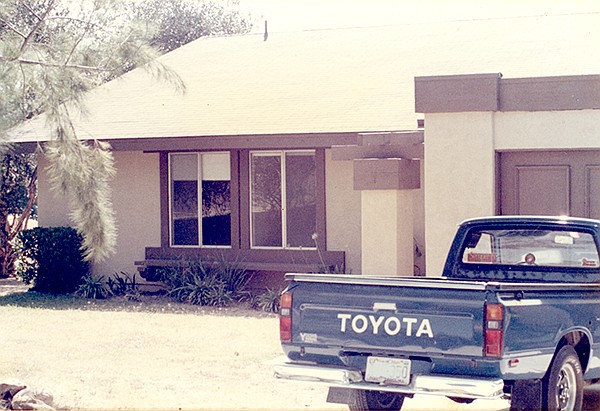
There wasn’t a terror threat. This wasn’t a time of war. It was just another day living on Camp Pendleton in the late 1980s. I imagine a lot of kids would experience a semi-traumatic thrill if armed military aircraft abruptly landed in the middle of their soccer practice. But we military brats had all grown up around this stuff. While we thought it cool, we were mostly impatient to get our practice field back so we could finish the game.
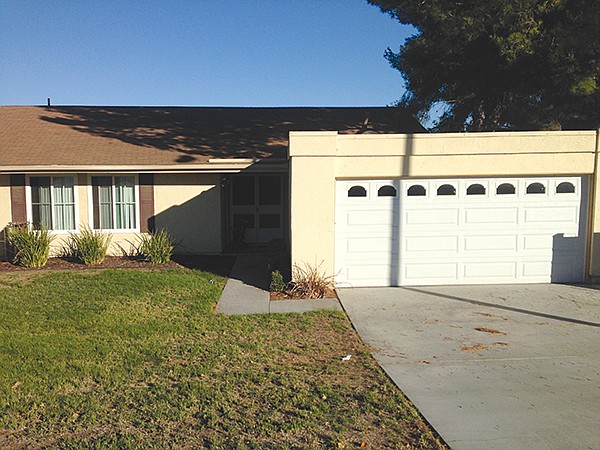
But as the second chopper finally lifted off, a bugle note sounded, the first of several long doleful intervals of the funeral dirge Taps. Live or on a recording, Taps plays every night, on just about every American military installation in the world, while the American flag is lowered and folded up to be put away for the night. This meant the sun was going down and practice was over for our youth soccer team, the Lasers, representing the central housing areas of Marine Corps Base Camp Pendleton.
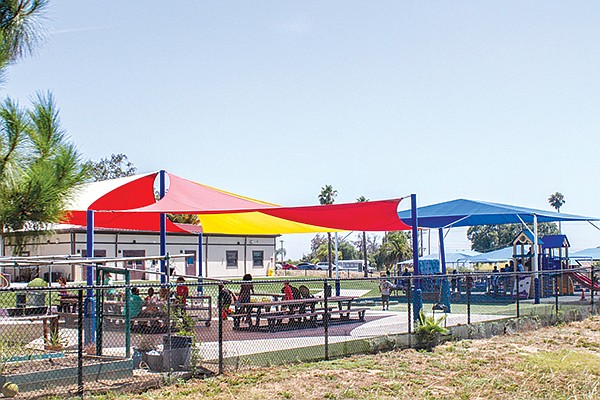
At more than 200 square miles, Camp Pendleton covers a massive chunk of North County. It’s bigger than Oceanside, Carlsbad, San Marcos, Vista, and Escondido put together, with room left over for Fallbrook. But its population is smaller than any one of those cities — around 40,000 residents — and demographically unique. Virtually all are under the age of 50, most of them over 18 and fit for service.

But nearly half are the families of those in uniform — in government-speak, the “dependents.” Marines may be the reason the base is there, but it’s their children and spouses who make up the community.

Military families typically move from duty station to duty station every couple of years, across the U.S. and sometimes overseas. Mine was no different. We lived on Pendleton for several years during my early teens, in the small, remote neighborhood called San Luis Rey Housing. At least, that’s the official name. Most of us living there grew up fluent in military jargon, so we called it the 17 Area.

At some point in Pendleton’s history, there were 18 cantonments — housing areas — spread throughout the large base. The 17 Area sits about five miles inland along the base’s southern border, near Oceanside’s San Luis Rey Mission.
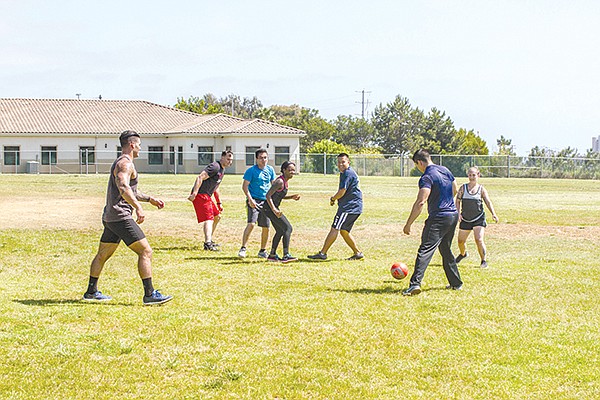
When I lived there, the neighborhood had about a hundred homes, built around a loop of road with only one point of access, and otherwise buffered on all sides by scrubby, undeveloped hills. The neighborhood housed the families of field-grade officers — those ranking major and above — meaning most of the kids living there were school age.
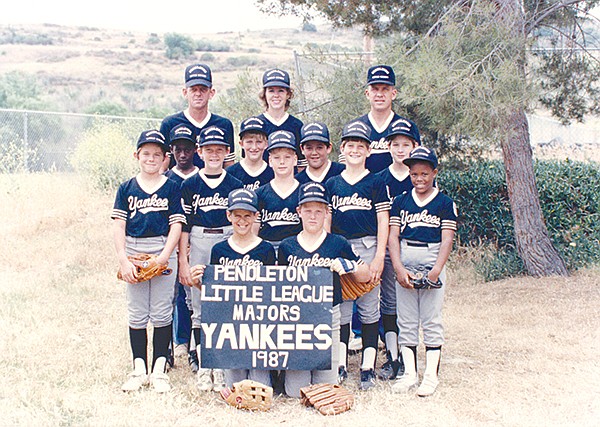
Each summer, about half the families living on Pendleton move away, making room for a new group of families to move in. This means the entire population of a base neighborhood completely turns over every few years. When I left the 17 Area, I knew just about every kid in the neighborhood. But if I’d gone back for a visit just a couple years after moving away, chances are, every one of my old neighbors would be gone.
Yet, despite the constant displacement, the 17 Area was the most tight-knit community I’ve ever known.
Unlike a civilian neighborhood, where you might find a family living next door to retirees on one side and an apartment building on the other, most of the families in base housing are roughly within the same age range, making about the same income and living in matching, single-family homes. More often than not, they’re in about the same place in life — raising a family and acclimating to life in a new town, away from old friends and family.
We may have known each other only briefly, but we knew each other well. Neighbors routinely gathered for block parties on the weekends, kids played pick-up football games on grassy parks, and everybody babysat for everyone.
“It’s kind of like Mayberry,” says Melissa Reynolds. “You can let your kids out. All the neighbors are friendly.... We’re all in the same boat; we can rely on each other.”
Reynolds moved to the 17 Area two years ago with her Air Force officer husband and three young children. Originally from New Mexico, she recounts the culture shock she experienced when she first married into the military and found herself far from home for the first time, living in the Washington DC area.
“I moved from Albuquerque to Alexandria, Virginia, into this little tiny apartment, in this big, huge city,” she recalls. “I had never been anywhere!”
Ten years later, Reynolds and her family had racked up nine mailing addresses by the time they moved to Pendleton. “I feel like an expert mover now,” she says, and has even embraced the silver lining of having to constantly uproot all of your possessions: “You declutter your home every two years!”
In a practice common among military families, Reynolds usually stays behind to pack up their home while her husband moves ahead to his next duty station. In one move, she gave birth to a child, then rejoined him later, once their furniture arrived at their next home.
In most of their duty stations, the Reynoldses haven’t lived on base. They still own the townhouse they bought in Virginia, but Melissa points out she never met her next-door neighbors until the day she moved out. Off base, people had different circumstances, different interests, different schedules. They decided to give base housing a try when they were stationed at Maxwell Air Force Base, in Alabama, and the difference was drastic.“On base,” she explains, “unless you’re just an outright hermit, you really can’t not meet your neighbors.”
The Reynoldses enjoyed the value of living on base enough that they applied to get a home on Camp Pendleton, even though he is stationed an hour north, on March Air Force Base in Riverside County, which at 158 acres is too small to provide family quarters.
They’ve found the same sense of community living on Pendleton, though there are differences to living in a remote neighborhood like 17 Area, which sits about two miles south of that headquarters building where Taps play every night. “My kids got used to Taps,” she says, explaining her children had learned to recognize the bugling as the signal it was bedtime. “Now we don’t have that,” she adds with a laugh, “so I play it on my phone.”
There are 45,000 active-duty military personnel stationed on Camp Pendleton, but only about half choose to live on base. Instead, many opt to live, in the military parlance, “on the economy,” meaning they buy or rent homes in civilian communities surrounding the base. On Pendleton, that means any of the aforementioned North County cities, or in communities north of the base, such as San Clemente or Murrieta.
As part of the military salary and benefits package, each service member receives what they call a base allowance for housing. The tax-exempt monthly stipend can be applied toward rent or mortgage off base if they choose, but if you live on base, it covers the full rent for family housing designated for their rank.
For single Marines, the choice to stay on base means living in the barracks — dormitory-like housing that packs enough young Marines in close quarters to test the Corps’ famous gung ho spirit. But nearly 7000 homes on Camp Pendleton are designated for families — servicemembers with dependents.
If you live around a base-adjacent town like Oceanside, it’s tough to shake the perception of Marines as young, rowdy bachelors looking to drink, chase girls, and get tattoos. But these are usually the one-and-done guys, who put in their three to five year terms of service and move on.
Career Marines, especially officers, tend to lead a quite different lifestyle. According to a 2012 demographic study, nearly 70 percent of Marine officers are married and have their first child, on average, at 24 — three years earlier than the general population in the U.S.
While family life proves a very important escape from the rigors of the military hierarchy, Marine officers tend to put in much more than a 40-hour work week and often leave their families for weeks- and months-long deployments. That’s why it’s left to military spouses to create a sense of community.
When we lived on Pendleton, my mother was president of an organization called the Officer’s Wives Club. On its surface, the OWC (the military is big on acronyms) served as a social club for officers’ wives. But it also offered a tremendous support system for women who might need help adjusting to a new community or a little help when their husbands were away from home for long stretches. The organization was always working to develop resources for each other and to raise funds for college scholarships for military dependents.
I met with Toni Stinson, the current president of the Officer’s Wives Club. Except it’s not called that anymore. Three years ago, it changed its name to the Officers’ Spouses’ Club, to reflect a modern-day Marine Corps that has embraced the realities of female officers, gay servicemembers, and the legalization of same-sex marriage.
Stinson says, as of this spring, she didn’t know of any same-sex spouses that had joined the club, but a couple of husbands had taken an interest, and they were looking into joining forces with a corresponding men’s club, called Macho Spouses.
“It’s not your grandma’s spouse club,” she jests, and points out the range of activities they organize includes hikes, canoeing trips, paddleboarding excursions, and wine-tasting trips.
Last spring, Stinson tells me, the club made another momentous name change. “We became the first officers’ spouse club in the world to become an all ranks organization,” she explains. It’s now called the Military Spouse Association, offering spouses of enlisted Marines the same opportunity to network and engage within the community. And when Stinson finishes her term as president this summer, an enlisted wife has been elected to take her place.
The 17 Area has also changed considerably since my time, and mostly for the better. For one thing, 139 homes have been added to the neighborhood. They’re three- and four-bedroom houses, like those my family and neighbors occupied, but most of them are bigger, and two stories instead of one.
These newer homes now house the field-grade officers, while our old digs now mostly go to company-grade officers: captains and lieutenants. Our smaller, single-story houses, built in the 1960s, have been completely gutted and remodeled. One tract of ranch-style homes is designated for colonels; on the hilltop side of the neighborhood, another tract offers larger homes designated for generals.
These changes took place beginning in 2003, when construction and maintenance of military housing was turned over to a public-private venture called Lincoln Military Housing.
“We’re one of eight [military housing] companies in the country,” says Lincoln’s regional vice president Steve Browne, who manages the housing on Pendleton and other bases in the region. He had previously managed private residential developments. “Before we got here, the government had run housing,” he says. “I had never seen housing in the condition it was in,” he adds. “I had never seen it in my career how bad housing could be.”
When I lived on bases growing up, the best homes by far were those built in the 1940s or earlier. Anything built in the ’50s or ’60s had already gotten pretty run down by the ’80s, and Brown paints a dismal picture of how broken down they’d become by the turn of the century.
“You couldn’t really blame anybody,” Browne attests, noting that all military funding starts at the federal level, and a variety of circumstances might prevent it from being spent on residential needs. “Congress allotted everything to come down to housing,” he explains, “but in the interim, wars were being fought, and they had to buy planes and had to do this and do that. So the money that trickled down to fixing streets on base, or fixing buildings on base — a lot of the times didn’t get there.”
As a private enterprise, Lincoln used its own financing and its own construction resources to build up and refurbish military neighborhoods, much as it would a wholly private development. It signs its military residents to leases subject to California real estate law, just like any other property manager.
The main difference here is that, instead of rent, Lincoln collects the base allowance for housing from each of its residents. That income supports daily operations, pays down the debt on its original investment, and goes into a fund to support future reconstruction as repairs. In return, it got a 50-year contract to manage 40,000 homes, and the military provides a steady stream of tenants to keep the business running strong, regardless of market forces that might affect occupancy rates in the civilian world.
Browne characterizes his job at Lincoln as more fun than working off base. “In the outside world,” he says, “you’re more about bottom line and making money; in here it really is more taking care of the families.”
Andrew Killion, Lincoln’s director of military affairs, explains, “Our mission is to provide our military families with exemplary service and a quality home environment.”
A retired Marine, Killion has lived in base housing and understands the community Lincoln is set up to serve. He says the bar has been raised when it comes to military housing. For example, when I lived in the 17 Area, my most dreaded chore was mowing the lawn; these days, Lincoln handles that. Lincoln’s maintenance schedule covers a lot more than that.
“It’s what I characterize as ‘soup to nuts,’” Killion tells me. “We take care of everything in the home.” There’s a 24-hour phone line residents can call, with a pledged one-hour response time for what he terms “fire, flood, or blood” emergencies. But it’s one of the non-emergency requests that blows me away. “If a resident has a maintenance need, something as simple as a light bulb is out,” he says, “it creates a ticket.” Apparently, with Lincoln housing taking care of things, it takes zero Marines to change a light bulb.
The first time I spoke on the phone to another 17 Area resident, Christina Galvez, her family had just gotten a new puppy, and we were frequently interrupted as neighborhood kids dropped by her house to see it. “My house is like Grand Central Station for kids,” she joked. “Kids literally going in one door, going out the back door….”
Like me, Galvez grew up on bases, moving all over the U.S., including stops in North Carolina and Hawaii. As a young adult, she wound up marrying a Marine and returned to the military lifestyle. Basically, other than a few years during and after college, she’s lived on bases her whole life. Though she never lived on Camp Pendleton growing up, in a sense she’s a native.
That will change this summer, when her husband retires, and they move to be near family in Texas. The idea freaks her out because, like me, the idea of living in one place for years on end seems counter-intuitive.
“This is the only life I’ve really ever known,” she tells me. “I got so accustomed to moving — you know — every couple of years you’re, like, okay, it’s really kind of time to go somewhere!”
After we play the military-brat game of figuring out which other bases we both might have lived on or schools we’ve attended, she shares what it’s like experiencing life on base through the eyes of a visiting relative.
The 17 Area happens to be near a heavy-artillery range, effectively treating its residents to rattling window frames and the sounds of warfare on a regular basis. “Part of the weekly housekeeping routine is to let [the kids] straighten all the pictures on the walls that have gotten jostled by the training,” Galvez says, laughing but not joking. “It’s funny, because you don’t realize how loud it is or how much the house shakes until you have a civilian in your house…. You don’t even notice it, but you have the sister-in-law dropping to the ground!”
At the gated entrance to the Cherry Point air base in North Carolina, a sign reads, “Pardon our noise, it’s the sound of freedom.” When you live on an air base, the sonic boom of jets hitting the sound barrier becomes an almost daily occurrence. On Camp Pendleton, it’s just as commonplace to pass a line of tanks just rolling down the highway.
The irony here is that, despite the noise and visible weaponry, life on a Marine base turns out to be safe and secure. Not only do armed sentries stand guard at every gate, ensuring dangerous characters can’t get in, but generally every home is occupied by at least one person trained extensively in both firearms and hand-to-hand combat.
This sense of security usually means children have greater license to explore the neighborhood. In fact, at the age of ten, military brats get their own ID cards, which give them license to access base services, like checking out a basketball at the gym, going swimming at a base pool, or riding a horse on the base stables. We had things like a bowling alley, a miniature golf course, tennis courts, and a lake with camping and paddle boats. These days, just across the highway from the 17 Area, there’s a paintball park.
And when we tired of organized amenities, we’d traipse around the wild surrounding hillsides, climbing trees, playing games of war, running away from coyotes and rattlesnakes.
When I got in touch with a few of my old 17 Area friends, now raising kids of their own in civilian communities, they look back and marvel at how much leeway we enjoyed.
“I cannot imagine my kids getting on their bikes and riding off alone for the day,” offers my friend Amanda. “To the pool, then a friend’s house, then the playground. Maybe home by dusk. Maybe it was just a different time. Or our parents felt a certain sense of security being on a military base.”
“There are things you can’t quantify in an off-base house versus an on-base house,” Galvez says. “You don’t want to fall into the trap of thinking that it’s a hundred percent safe,” Galvez stresses, “but it’s safer.”
She tells me that sense of security is something families like hers greatly value, in large part because their kids can experience the sort of adventuresome childhood that becomes more rare in this country with each generation. “That’s how we grew up!” she tells me. “We were young and we just had free run of the place…you can’t put a dollar amount on that.”
Granted, feeling safe is subjective. One night as a teen, a bunch of us kids got together to play a neighborhood-wide hide-and-seek type game. The exact rules are vague to me now, but I remember thinking I had the winning strategy.
There were two houses at the end of a cul-de-sac, with backyard fences spaced about two feet apart. Cutting through the narrow alley between fences should have made a great short cut to a park on the next block. Problem was, everyone knew a huge snarling dog lived in one of the yards, and if it heard you pass, it would bark ferociously and slam itself into the fence with enough force that you didn’t think the planks would hold.
I figured if I could sneak by the dog without waking it, I would have the perfect hiding spot — able to view the whole park without being seen. So I summoned whatever ninja skills a 13-year-old can muster and crept slowly, silently between the fences.
It got darker the farther I went, so I couldn’t see the end of the fence ahead of me, but I knew I was getting close. I may have sped up just a little, and I’m certain the side of my mouth started to tug into a smirk.
The dog didn’t hear me. But neither did the uniformed Marine standing guard at the end of the fence. He stood at attention, all of 18 years old, holding an M-16 rifle in his hands and watching the park intently. I’d crept up behind him, close enough to touch his shoulder, and then I froze. If there was a safe way to let an armed Marine know I was standing behind him in the dark, I couldn’t think of it.
I crept slowly, silently, back between the fences, and went home. I never figured out what he was supposed to be guarding.
As comfortable as we all became with the presence of guns, cannons, tanks, and helicopters, sometimes there would be this kind of reminder what the point of the base is: to ready our nation’s elite fighting force for life-or-death combat.
The Galvez family has spent ten years living in Camp Pendleton, off and on. They lived there in 2003, when the U.S. launched Operation Iraqi Freedom. Christina Galvez was pregnant with their first child when her husband’s orders came in to deploy the next day. “Pack your bags and be there at 0300,” she remembers.
When Marines are deployed for long combat tours, Lincoln Housing lets the family out of their lease. Some spouses will do so and move home to be near their extended families to endure the absence of their husbands or wives.
Galvez decided to stay home, on the base. “That’s when you notice the difference between the military community and the civilian community the most,” she says. “Just being surrounded by people who are in the same boat and know what you’re going through is a comfort.”
And the whole community feels it. “As soon as the casualties came in, my phone was ringing off the hook,” she remembers. “The first deployment was probably the most difficult,” she continues, “because everybody deployed at the same time.” It was like all the Marines disappeared overnight, leaving a neighborhood of mostly wives and children. As the war grew long, Marines rotated in and out of Iraq or Afghanistan, so it wasn’t as drastic as the first few months, when, she recalls, “There were one or two men on a block who did all the heavy lifting for the whole neighborhood.”
Even though the 17 Area has expanded, it’s still quite small. From the backyard of my house, we looked across empty hillsides, where there wasn’t another manmade structure in view. Today, the top of those hills are crested by long rows of homes. When you look at the area on a map, you can see the way housing developments have filled every usable half acre to build flush to the border of the base.
But the 17 Area remains small and is surrounded by undeveloped land. It’s kind of like a time capsule in that way, preserving a sense of American community that sometimes feels like it’s disintegrating.


We were nearing the end of a late-afternoon soccer practice, trying to squeeze in a few more minutes of scrimmage time before the sun set when coach blew his whistle. The long, shrill tweet stopped the action and brought all of us dutiful 11-year-olds to silence, so we could hear a familiar pulsing sound approach.

Coach waved us off the field and we gathered on the sideline to watch as a pair of drab green military helicopters thudded down around midfield. Several Marine officers, wearing flak jackets over their camouflage uniforms, hopped out and jogged at the same purposeful pace toward the brick base headquarters building, 50 yards away.

There wasn’t a terror threat. This wasn’t a time of war. It was just another day living on Camp Pendleton in the late 1980s. I imagine a lot of kids would experience a semi-traumatic thrill if armed military aircraft abruptly landed in the middle of their soccer practice. But we military brats had all grown up around this stuff. While we thought it cool, we were mostly impatient to get our practice field back so we could finish the game.

But as the second chopper finally lifted off, a bugle note sounded, the first of several long doleful intervals of the funeral dirge Taps. Live or on a recording, Taps plays every night, on just about every American military installation in the world, while the American flag is lowered and folded up to be put away for the night. This meant the sun was going down and practice was over for our youth soccer team, the Lasers, representing the central housing areas of Marine Corps Base Camp Pendleton.

At more than 200 square miles, Camp Pendleton covers a massive chunk of North County. It’s bigger than Oceanside, Carlsbad, San Marcos, Vista, and Escondido put together, with room left over for Fallbrook. But its population is smaller than any one of those cities — around 40,000 residents — and demographically unique. Virtually all are under the age of 50, most of them over 18 and fit for service.

But nearly half are the families of those in uniform — in government-speak, the “dependents.” Marines may be the reason the base is there, but it’s their children and spouses who make up the community.

Military families typically move from duty station to duty station every couple of years, across the U.S. and sometimes overseas. Mine was no different. We lived on Pendleton for several years during my early teens, in the small, remote neighborhood called San Luis Rey Housing. At least, that’s the official name. Most of us living there grew up fluent in military jargon, so we called it the 17 Area.

At some point in Pendleton’s history, there were 18 cantonments — housing areas — spread throughout the large base. The 17 Area sits about five miles inland along the base’s southern border, near Oceanside’s San Luis Rey Mission.

When I lived there, the neighborhood had about a hundred homes, built around a loop of road with only one point of access, and otherwise buffered on all sides by scrubby, undeveloped hills. The neighborhood housed the families of field-grade officers — those ranking major and above — meaning most of the kids living there were school age.

Each summer, about half the families living on Pendleton move away, making room for a new group of families to move in. This means the entire population of a base neighborhood completely turns over every few years. When I left the 17 Area, I knew just about every kid in the neighborhood. But if I’d gone back for a visit just a couple years after moving away, chances are, every one of my old neighbors would be gone.
Yet, despite the constant displacement, the 17 Area was the most tight-knit community I’ve ever known.
Unlike a civilian neighborhood, where you might find a family living next door to retirees on one side and an apartment building on the other, most of the families in base housing are roughly within the same age range, making about the same income and living in matching, single-family homes. More often than not, they’re in about the same place in life — raising a family and acclimating to life in a new town, away from old friends and family.
We may have known each other only briefly, but we knew each other well. Neighbors routinely gathered for block parties on the weekends, kids played pick-up football games on grassy parks, and everybody babysat for everyone.
“It’s kind of like Mayberry,” says Melissa Reynolds. “You can let your kids out. All the neighbors are friendly.... We’re all in the same boat; we can rely on each other.”
Reynolds moved to the 17 Area two years ago with her Air Force officer husband and three young children. Originally from New Mexico, she recounts the culture shock she experienced when she first married into the military and found herself far from home for the first time, living in the Washington DC area.
“I moved from Albuquerque to Alexandria, Virginia, into this little tiny apartment, in this big, huge city,” she recalls. “I had never been anywhere!”
Ten years later, Reynolds and her family had racked up nine mailing addresses by the time they moved to Pendleton. “I feel like an expert mover now,” she says, and has even embraced the silver lining of having to constantly uproot all of your possessions: “You declutter your home every two years!”
In a practice common among military families, Reynolds usually stays behind to pack up their home while her husband moves ahead to his next duty station. In one move, she gave birth to a child, then rejoined him later, once their furniture arrived at their next home.
In most of their duty stations, the Reynoldses haven’t lived on base. They still own the townhouse they bought in Virginia, but Melissa points out she never met her next-door neighbors until the day she moved out. Off base, people had different circumstances, different interests, different schedules. They decided to give base housing a try when they were stationed at Maxwell Air Force Base, in Alabama, and the difference was drastic.“On base,” she explains, “unless you’re just an outright hermit, you really can’t not meet your neighbors.”
The Reynoldses enjoyed the value of living on base enough that they applied to get a home on Camp Pendleton, even though he is stationed an hour north, on March Air Force Base in Riverside County, which at 158 acres is too small to provide family quarters.
They’ve found the same sense of community living on Pendleton, though there are differences to living in a remote neighborhood like 17 Area, which sits about two miles south of that headquarters building where Taps play every night. “My kids got used to Taps,” she says, explaining her children had learned to recognize the bugling as the signal it was bedtime. “Now we don’t have that,” she adds with a laugh, “so I play it on my phone.”
There are 45,000 active-duty military personnel stationed on Camp Pendleton, but only about half choose to live on base. Instead, many opt to live, in the military parlance, “on the economy,” meaning they buy or rent homes in civilian communities surrounding the base. On Pendleton, that means any of the aforementioned North County cities, or in communities north of the base, such as San Clemente or Murrieta.
As part of the military salary and benefits package, each service member receives what they call a base allowance for housing. The tax-exempt monthly stipend can be applied toward rent or mortgage off base if they choose, but if you live on base, it covers the full rent for family housing designated for their rank.
For single Marines, the choice to stay on base means living in the barracks — dormitory-like housing that packs enough young Marines in close quarters to test the Corps’ famous gung ho spirit. But nearly 7000 homes on Camp Pendleton are designated for families — servicemembers with dependents.
If you live around a base-adjacent town like Oceanside, it’s tough to shake the perception of Marines as young, rowdy bachelors looking to drink, chase girls, and get tattoos. But these are usually the one-and-done guys, who put in their three to five year terms of service and move on.
Career Marines, especially officers, tend to lead a quite different lifestyle. According to a 2012 demographic study, nearly 70 percent of Marine officers are married and have their first child, on average, at 24 — three years earlier than the general population in the U.S.
While family life proves a very important escape from the rigors of the military hierarchy, Marine officers tend to put in much more than a 40-hour work week and often leave their families for weeks- and months-long deployments. That’s why it’s left to military spouses to create a sense of community.
When we lived on Pendleton, my mother was president of an organization called the Officer’s Wives Club. On its surface, the OWC (the military is big on acronyms) served as a social club for officers’ wives. But it also offered a tremendous support system for women who might need help adjusting to a new community or a little help when their husbands were away from home for long stretches. The organization was always working to develop resources for each other and to raise funds for college scholarships for military dependents.
I met with Toni Stinson, the current president of the Officer’s Wives Club. Except it’s not called that anymore. Three years ago, it changed its name to the Officers’ Spouses’ Club, to reflect a modern-day Marine Corps that has embraced the realities of female officers, gay servicemembers, and the legalization of same-sex marriage.
Stinson says, as of this spring, she didn’t know of any same-sex spouses that had joined the club, but a couple of husbands had taken an interest, and they were looking into joining forces with a corresponding men’s club, called Macho Spouses.
“It’s not your grandma’s spouse club,” she jests, and points out the range of activities they organize includes hikes, canoeing trips, paddleboarding excursions, and wine-tasting trips.
Last spring, Stinson tells me, the club made another momentous name change. “We became the first officers’ spouse club in the world to become an all ranks organization,” she explains. It’s now called the Military Spouse Association, offering spouses of enlisted Marines the same opportunity to network and engage within the community. And when Stinson finishes her term as president this summer, an enlisted wife has been elected to take her place.
The 17 Area has also changed considerably since my time, and mostly for the better. For one thing, 139 homes have been added to the neighborhood. They’re three- and four-bedroom houses, like those my family and neighbors occupied, but most of them are bigger, and two stories instead of one.
These newer homes now house the field-grade officers, while our old digs now mostly go to company-grade officers: captains and lieutenants. Our smaller, single-story houses, built in the 1960s, have been completely gutted and remodeled. One tract of ranch-style homes is designated for colonels; on the hilltop side of the neighborhood, another tract offers larger homes designated for generals.
These changes took place beginning in 2003, when construction and maintenance of military housing was turned over to a public-private venture called Lincoln Military Housing.
“We’re one of eight [military housing] companies in the country,” says Lincoln’s regional vice president Steve Browne, who manages the housing on Pendleton and other bases in the region. He had previously managed private residential developments. “Before we got here, the government had run housing,” he says. “I had never seen housing in the condition it was in,” he adds. “I had never seen it in my career how bad housing could be.”
When I lived on bases growing up, the best homes by far were those built in the 1940s or earlier. Anything built in the ’50s or ’60s had already gotten pretty run down by the ’80s, and Brown paints a dismal picture of how broken down they’d become by the turn of the century.
“You couldn’t really blame anybody,” Browne attests, noting that all military funding starts at the federal level, and a variety of circumstances might prevent it from being spent on residential needs. “Congress allotted everything to come down to housing,” he explains, “but in the interim, wars were being fought, and they had to buy planes and had to do this and do that. So the money that trickled down to fixing streets on base, or fixing buildings on base — a lot of the times didn’t get there.”
As a private enterprise, Lincoln used its own financing and its own construction resources to build up and refurbish military neighborhoods, much as it would a wholly private development. It signs its military residents to leases subject to California real estate law, just like any other property manager.
The main difference here is that, instead of rent, Lincoln collects the base allowance for housing from each of its residents. That income supports daily operations, pays down the debt on its original investment, and goes into a fund to support future reconstruction as repairs. In return, it got a 50-year contract to manage 40,000 homes, and the military provides a steady stream of tenants to keep the business running strong, regardless of market forces that might affect occupancy rates in the civilian world.
Browne characterizes his job at Lincoln as more fun than working off base. “In the outside world,” he says, “you’re more about bottom line and making money; in here it really is more taking care of the families.”
Andrew Killion, Lincoln’s director of military affairs, explains, “Our mission is to provide our military families with exemplary service and a quality home environment.”
A retired Marine, Killion has lived in base housing and understands the community Lincoln is set up to serve. He says the bar has been raised when it comes to military housing. For example, when I lived in the 17 Area, my most dreaded chore was mowing the lawn; these days, Lincoln handles that. Lincoln’s maintenance schedule covers a lot more than that.
“It’s what I characterize as ‘soup to nuts,’” Killion tells me. “We take care of everything in the home.” There’s a 24-hour phone line residents can call, with a pledged one-hour response time for what he terms “fire, flood, or blood” emergencies. But it’s one of the non-emergency requests that blows me away. “If a resident has a maintenance need, something as simple as a light bulb is out,” he says, “it creates a ticket.” Apparently, with Lincoln housing taking care of things, it takes zero Marines to change a light bulb.
The first time I spoke on the phone to another 17 Area resident, Christina Galvez, her family had just gotten a new puppy, and we were frequently interrupted as neighborhood kids dropped by her house to see it. “My house is like Grand Central Station for kids,” she joked. “Kids literally going in one door, going out the back door….”
Like me, Galvez grew up on bases, moving all over the U.S., including stops in North Carolina and Hawaii. As a young adult, she wound up marrying a Marine and returned to the military lifestyle. Basically, other than a few years during and after college, she’s lived on bases her whole life. Though she never lived on Camp Pendleton growing up, in a sense she’s a native.
That will change this summer, when her husband retires, and they move to be near family in Texas. The idea freaks her out because, like me, the idea of living in one place for years on end seems counter-intuitive.
“This is the only life I’ve really ever known,” she tells me. “I got so accustomed to moving — you know — every couple of years you’re, like, okay, it’s really kind of time to go somewhere!”
After we play the military-brat game of figuring out which other bases we both might have lived on or schools we’ve attended, she shares what it’s like experiencing life on base through the eyes of a visiting relative.
The 17 Area happens to be near a heavy-artillery range, effectively treating its residents to rattling window frames and the sounds of warfare on a regular basis. “Part of the weekly housekeeping routine is to let [the kids] straighten all the pictures on the walls that have gotten jostled by the training,” Galvez says, laughing but not joking. “It’s funny, because you don’t realize how loud it is or how much the house shakes until you have a civilian in your house…. You don’t even notice it, but you have the sister-in-law dropping to the ground!”
At the gated entrance to the Cherry Point air base in North Carolina, a sign reads, “Pardon our noise, it’s the sound of freedom.” When you live on an air base, the sonic boom of jets hitting the sound barrier becomes an almost daily occurrence. On Camp Pendleton, it’s just as commonplace to pass a line of tanks just rolling down the highway.
The irony here is that, despite the noise and visible weaponry, life on a Marine base turns out to be safe and secure. Not only do armed sentries stand guard at every gate, ensuring dangerous characters can’t get in, but generally every home is occupied by at least one person trained extensively in both firearms and hand-to-hand combat.
This sense of security usually means children have greater license to explore the neighborhood. In fact, at the age of ten, military brats get their own ID cards, which give them license to access base services, like checking out a basketball at the gym, going swimming at a base pool, or riding a horse on the base stables. We had things like a bowling alley, a miniature golf course, tennis courts, and a lake with camping and paddle boats. These days, just across the highway from the 17 Area, there’s a paintball park.
And when we tired of organized amenities, we’d traipse around the wild surrounding hillsides, climbing trees, playing games of war, running away from coyotes and rattlesnakes.
When I got in touch with a few of my old 17 Area friends, now raising kids of their own in civilian communities, they look back and marvel at how much leeway we enjoyed.
“I cannot imagine my kids getting on their bikes and riding off alone for the day,” offers my friend Amanda. “To the pool, then a friend’s house, then the playground. Maybe home by dusk. Maybe it was just a different time. Or our parents felt a certain sense of security being on a military base.”
“There are things you can’t quantify in an off-base house versus an on-base house,” Galvez says. “You don’t want to fall into the trap of thinking that it’s a hundred percent safe,” Galvez stresses, “but it’s safer.”
She tells me that sense of security is something families like hers greatly value, in large part because their kids can experience the sort of adventuresome childhood that becomes more rare in this country with each generation. “That’s how we grew up!” she tells me. “We were young and we just had free run of the place…you can’t put a dollar amount on that.”
Granted, feeling safe is subjective. One night as a teen, a bunch of us kids got together to play a neighborhood-wide hide-and-seek type game. The exact rules are vague to me now, but I remember thinking I had the winning strategy.
There were two houses at the end of a cul-de-sac, with backyard fences spaced about two feet apart. Cutting through the narrow alley between fences should have made a great short cut to a park on the next block. Problem was, everyone knew a huge snarling dog lived in one of the yards, and if it heard you pass, it would bark ferociously and slam itself into the fence with enough force that you didn’t think the planks would hold.
I figured if I could sneak by the dog without waking it, I would have the perfect hiding spot — able to view the whole park without being seen. So I summoned whatever ninja skills a 13-year-old can muster and crept slowly, silently between the fences.
It got darker the farther I went, so I couldn’t see the end of the fence ahead of me, but I knew I was getting close. I may have sped up just a little, and I’m certain the side of my mouth started to tug into a smirk.
The dog didn’t hear me. But neither did the uniformed Marine standing guard at the end of the fence. He stood at attention, all of 18 years old, holding an M-16 rifle in his hands and watching the park intently. I’d crept up behind him, close enough to touch his shoulder, and then I froze. If there was a safe way to let an armed Marine know I was standing behind him in the dark, I couldn’t think of it.
I crept slowly, silently, back between the fences, and went home. I never figured out what he was supposed to be guarding.
As comfortable as we all became with the presence of guns, cannons, tanks, and helicopters, sometimes there would be this kind of reminder what the point of the base is: to ready our nation’s elite fighting force for life-or-death combat.
The Galvez family has spent ten years living in Camp Pendleton, off and on. They lived there in 2003, when the U.S. launched Operation Iraqi Freedom. Christina Galvez was pregnant with their first child when her husband’s orders came in to deploy the next day. “Pack your bags and be there at 0300,” she remembers.
When Marines are deployed for long combat tours, Lincoln Housing lets the family out of their lease. Some spouses will do so and move home to be near their extended families to endure the absence of their husbands or wives.
Galvez decided to stay home, on the base. “That’s when you notice the difference between the military community and the civilian community the most,” she says. “Just being surrounded by people who are in the same boat and know what you’re going through is a comfort.”
And the whole community feels it. “As soon as the casualties came in, my phone was ringing off the hook,” she remembers. “The first deployment was probably the most difficult,” she continues, “because everybody deployed at the same time.” It was like all the Marines disappeared overnight, leaving a neighborhood of mostly wives and children. As the war grew long, Marines rotated in and out of Iraq or Afghanistan, so it wasn’t as drastic as the first few months, when, she recalls, “There were one or two men on a block who did all the heavy lifting for the whole neighborhood.”
Even though the 17 Area has expanded, it’s still quite small. From the backyard of my house, we looked across empty hillsides, where there wasn’t another manmade structure in view. Today, the top of those hills are crested by long rows of homes. When you look at the area on a map, you can see the way housing developments have filled every usable half acre to build flush to the border of the base.
But the 17 Area remains small and is surrounded by undeveloped land. It’s kind of like a time capsule in that way, preserving a sense of American community that sometimes feels like it’s disintegrating.
Comments